Harrison Lomax had already worked for the Smithsonian for 21 years when he wrote to Secretary Samuel P. Langley in 1903 to request a pay raise. Lomax, like most African American employees at the Institution, was hired as a “laborer.” In 1882, he earned $40 per month, and by the time he wrote this letter to Secretary Langley two decades later, he made just $41.66.
In response to the note below the letter, pictured above, in which Lomax’s supervisor refers to him as “faithful and diligent,” archaeologist Frederick W. Hodge, then executive assistant in charge of the International Exchange Service, made his own, perhaps curt, reply. Hodge clearly understood Lomax’s merits, writing:
It is scarcely necessary to mention Harrison’s faithfulness and industry, which are already well known to the Secretary.
In another note, written directly to Secretary Langley’s office, Hodge scribbled a response to Lomax’s petition. Hodge wrote:
The fact that Harrison has been a faithful employee at the Institution for twenty-one years and satisfactorily attends to the needs of the Secretary’s offices and the Regents’ room would doubtless be regarded as sufficient warrant for the slight increase in his salary.
Though Lomax earned a slight increase of $45 per month, this exchange reveals the challenges African American employees faced at the Institution. Black employees would not be promoted, despite their “faithfulness and industry.” African American laborers during this period advanced at the Institution only by advocating for themselves.
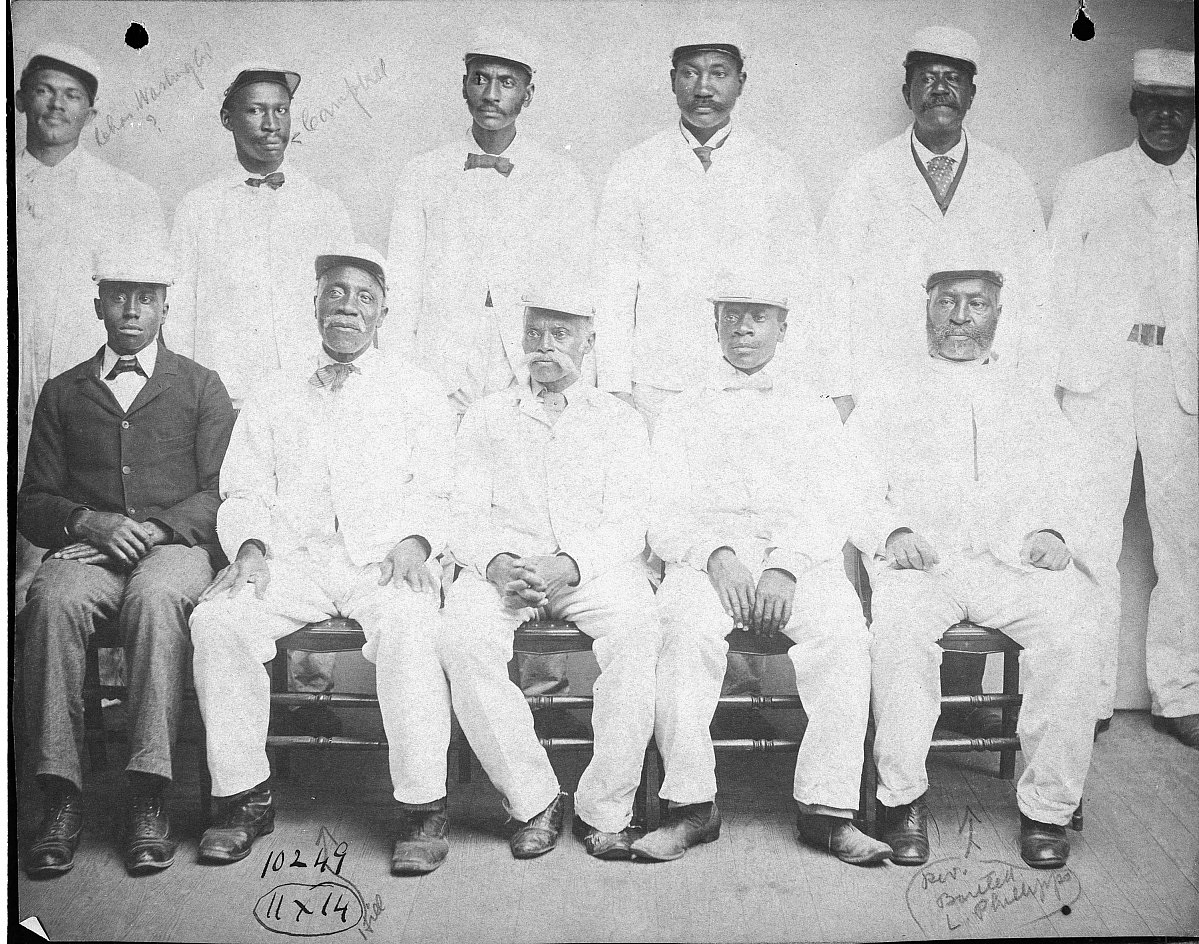
Harrison Lomax was born in Virginia around 1845. Before joining the Institution, he served in the Union Army as a teamster, responsible for transporting goods to and from camps, with the Quartermaster's Department. By the time Lomax joined the Smithsonian, he was married to Ann Lomax, and the two had three daughters—Delia, Lotta, and Fanny.

In his first years as a laborer at the Smithsonian, Lomax primarily worked as a driver for the chief clerk’s office. In addition to serving as a chauffeur to William Jones Rhees, Lomax also delivered packages, stuffed envelopes, cleaned rooms, and delivered messages.
Ten years later, Lomax worked even more directly with the Institution’s leaders. He was in charge of maintaining and cleaning the offices of Secretary Langley, chief clerk Rhees, and assistant Secretary and curator of exchanges William Crawford Winlock. Aside from building fires, sweeping the floors, and supplying water to each of the rooms, Lomax did even more of the heavy lifting. When large shipments of freight packages, books, and records arrived, Lomax was “always considered immediately available” to assist in the loading and unloading. He continued his work for the Institution until his death in 1918.
Though we don’t know much about the details of Lomax’s personal life, we can catch glimpses of his later life from government records. The federal census describes Lomax as the owner of a home at 930 Lamont Street NW, in the Park View neighborhood of Washington, D.C. Additionally, through official marriage records, we know Lomax remarried, after years as a widower, Louise T. Lyles in August 1915 at the age of 69.
Just three years after his new marriage, Lomax passed away in his home. His obituary, which was included in the Evening Star, then Washington’s mainstream newspaper, reveals he was a patron of the Vermont Street Baptist Church and a member of the fraternal organization the Grand United Order of Odd Fellows.
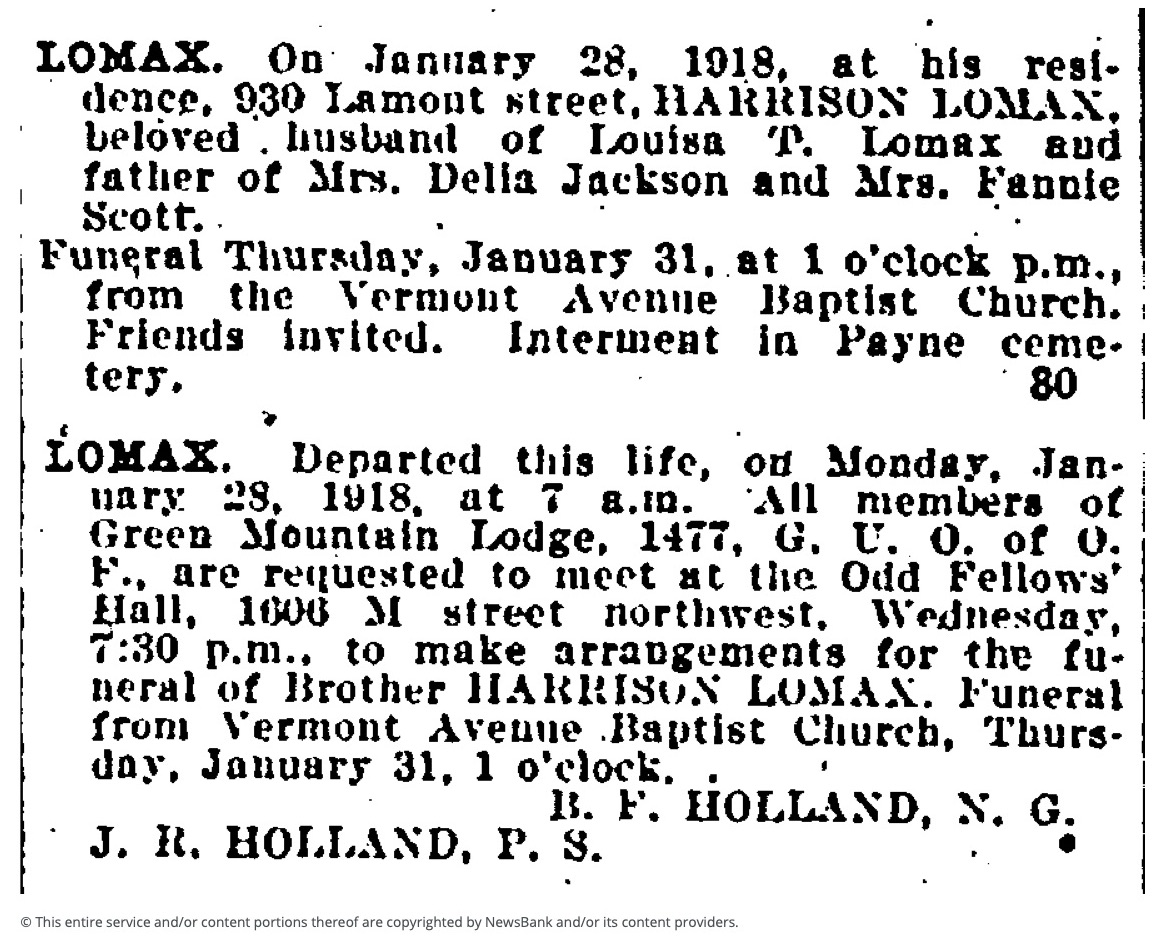
Through the few documents we've examined related to Lomax in our collections and in government records, it is clear that he was highly regarded by leaders throughout the Smithsonian during his 36-year career at the Institution.
Related Resources
- “Solomon Brown” in African American Groundbreakers at the Smithsonian: Challenges and Achievements, Smithsonian Institution Archives
- “James Thomas Gant” in African American Groundbreakers at the Smithsonian: Challenges and Achievements, Smithsonian Institution Archives
- “Archival Fingerprints - Meredith Smith Diggs” by Mitch Toda, The Bigger Picture, Smithsonian Institution Archives
Produced by the Smithsonian Institution Archives. For copyright questions, please see the Terms of Use.

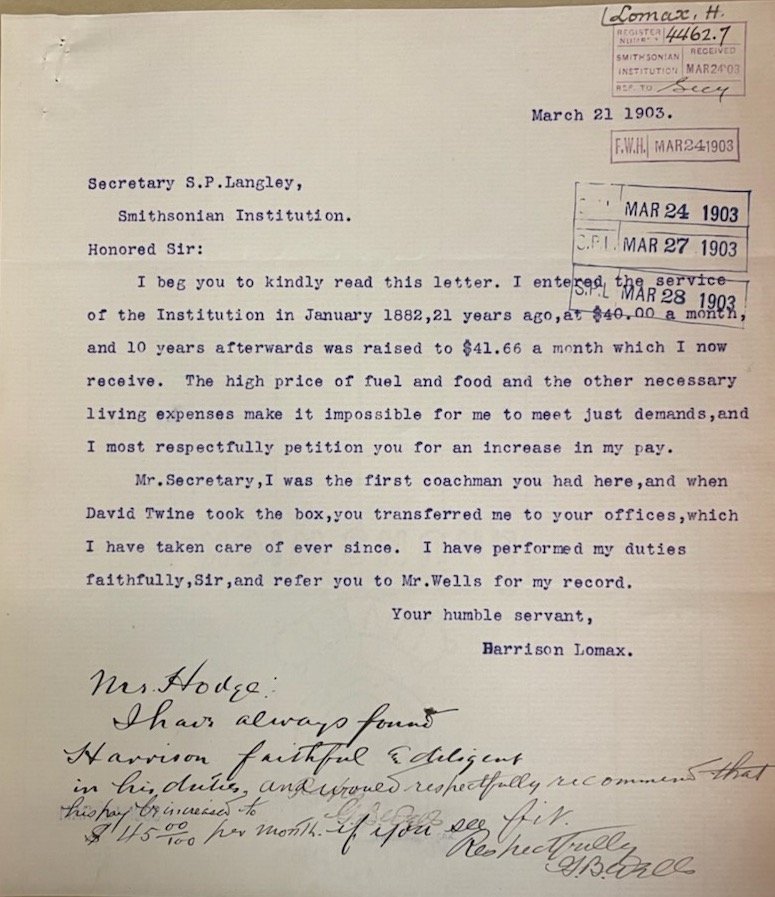
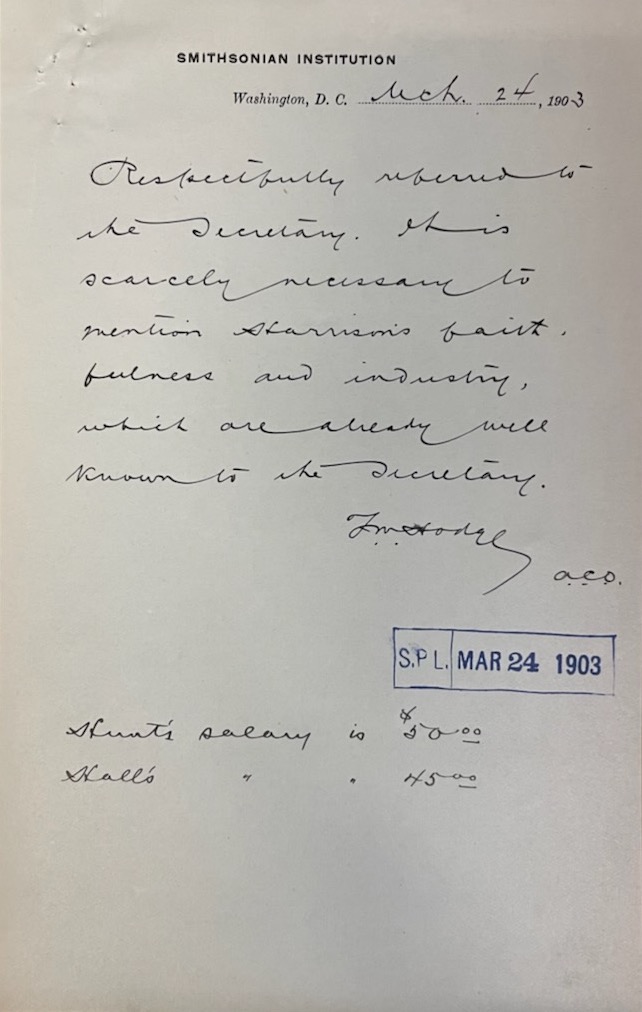
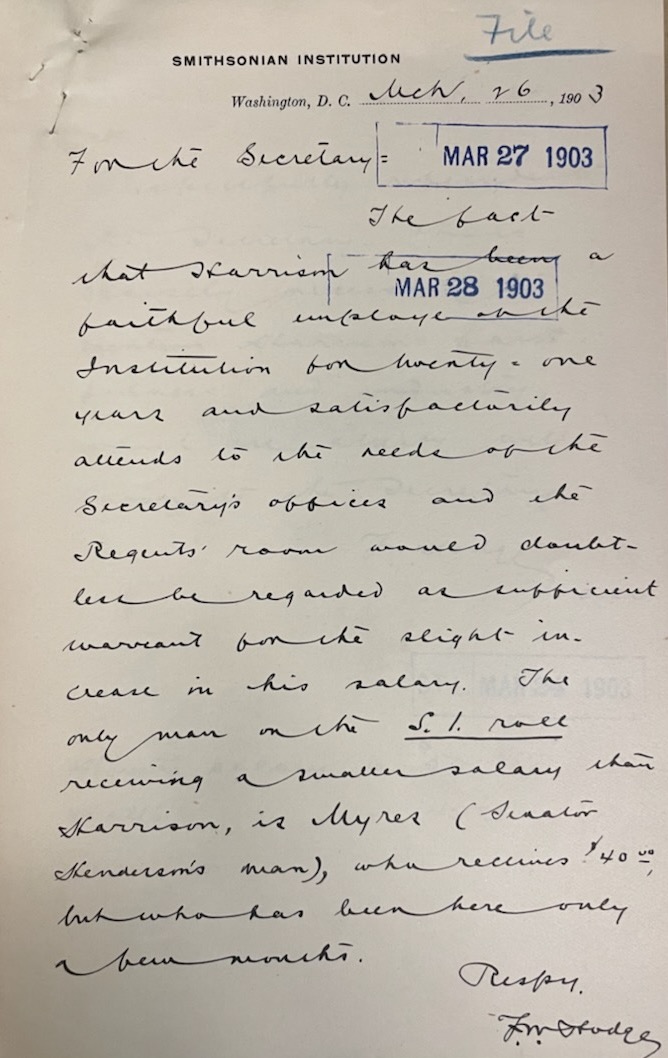



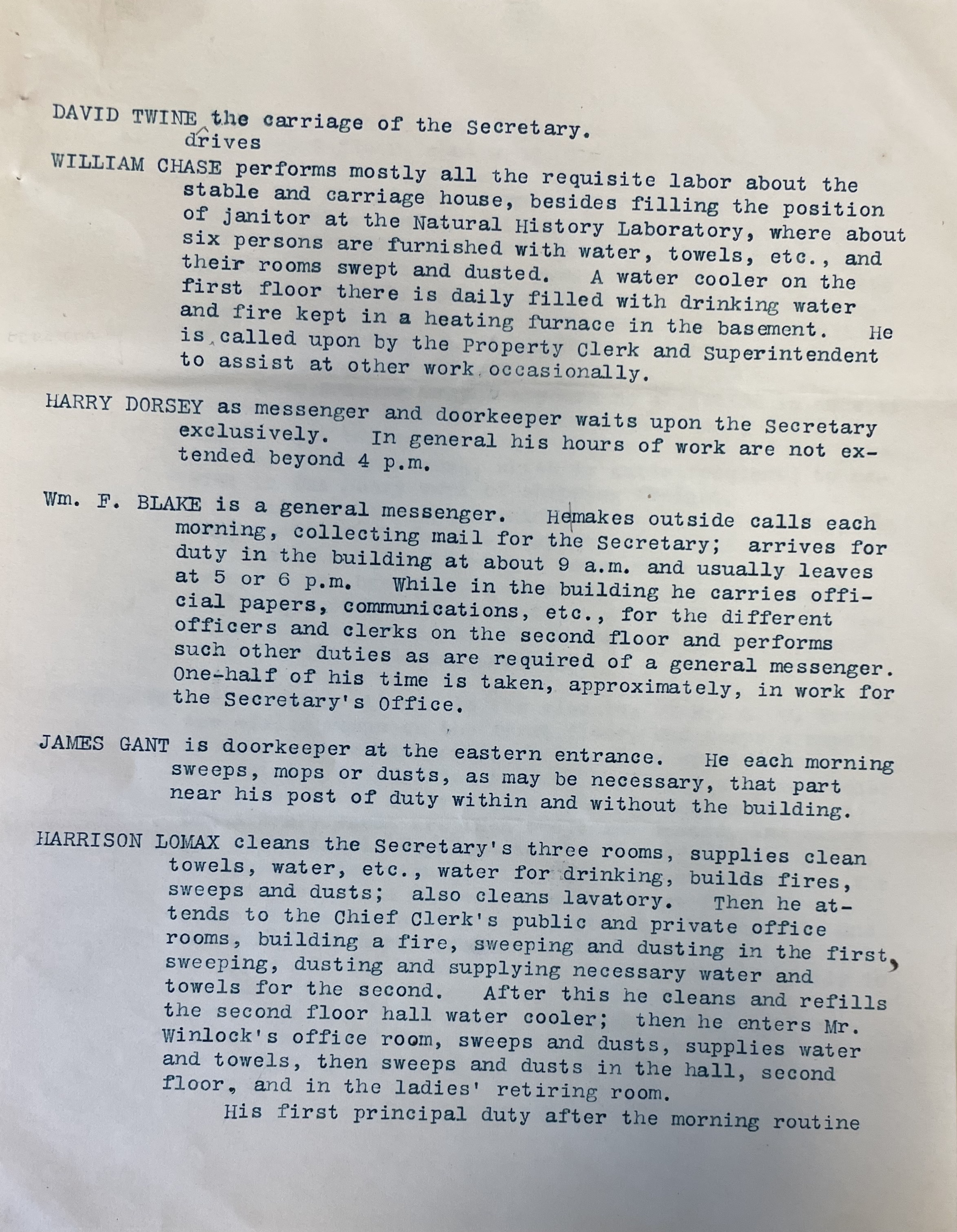

Leave a Comment